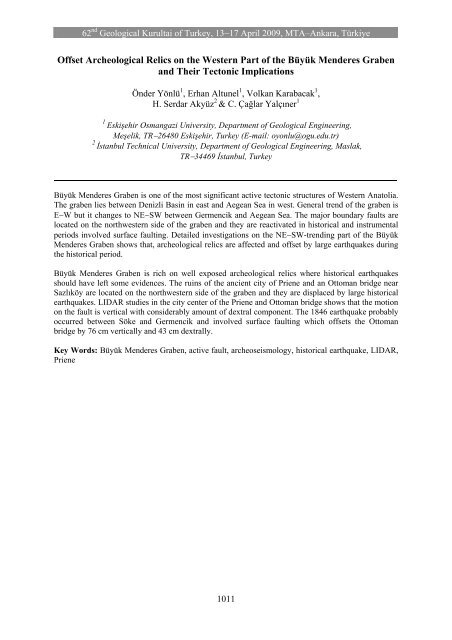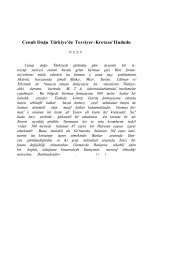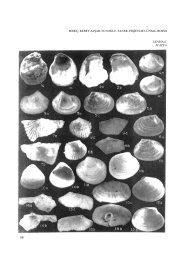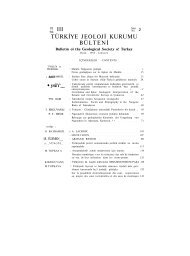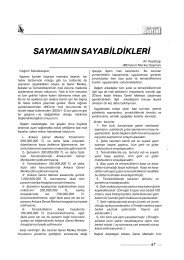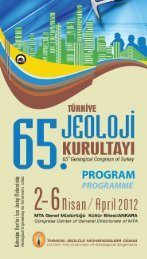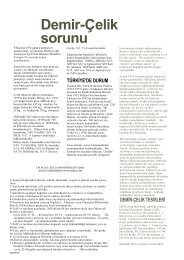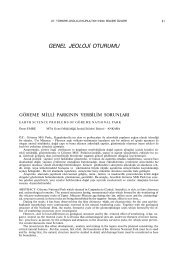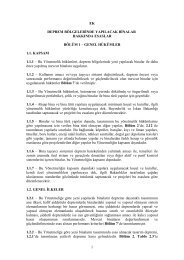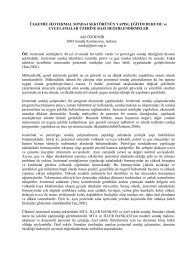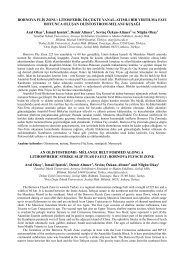Paleosismoloji ve Arkeosismoloji Palaeoseismology and ...
Paleosismoloji ve Arkeosismoloji Palaeoseismology and ...
Paleosismoloji ve Arkeosismoloji Palaeoseismology and ...
You also want an ePaper? Increase the reach of your titles
YUMPU automatically turns print PDFs into web optimized ePapers that Google loves.
62 nd Geological Kurultai of Turkey, 13−17 April 2009, MTA–Ankara, Türkiye<br />
Offset Archeological Relics on the Western Part of the Büyük Menderes Graben<br />
<strong>and</strong> Their Tectonic Implications<br />
Önder Yönlü 1 , Erhan Altunel 1 , Volkan Karabacak 1 ,<br />
H. Serdar Akyüz 2 & C. Çağlar Yalçıner 1<br />
1<br />
Eskişehir Osmangazi Uni<strong>ve</strong>rsity, Department of Geological Engineering,<br />
Meşelik, TR−26480 Eskişehir, Turkey (E-mail: oyonlu@ogu.edu.tr)<br />
2<br />
İstanbul Technical Uni<strong>ve</strong>rsity, Department of Geological Engineering, Maslak,<br />
TR−34469 İstanbul, Turkey<br />
Büyük Menderes Graben is one of the most significant acti<strong>ve</strong> tectonic structures of Western Anatolia.<br />
The graben lies between Denizli Basin in east <strong>and</strong> Aegean Sea in west. General trend of the graben is<br />
E−W but it changes to NE−SW between Germencik <strong>and</strong> Aegean Sea. The major boundary faults are<br />
located on the northwestern side of the graben <strong>and</strong> they are reactivated in historical <strong>and</strong> instrumental<br />
periods invol<strong>ve</strong>d surface faulting. Detailed in<strong>ve</strong>stigations on the NE−SW-trending part of the Büyük<br />
Menderes Graben shows that, archeological relics are affected <strong>and</strong> offset by large earthquakes during<br />
the historical period.<br />
Büyük Menderes Graben is rich on well exposed archeological relics where historical earthquakes<br />
should ha<strong>ve</strong> left some evidences. The ruins of the ancient city of Priene <strong>and</strong> an Ottoman bridge near<br />
Sazlıköy are located on the northwestern side of the graben <strong>and</strong> they are displaced by large historical<br />
earthquakes. LIDAR studies in the city center of the Priene <strong>and</strong> Ottoman bridge shows that the motion<br />
on the fault is <strong>ve</strong>rtical with considerably amount of dextral component. The 1846 earthquake probably<br />
occurred between Söke <strong>and</strong> Germencik <strong>and</strong> invol<strong>ve</strong>d surface faulting which offsets the Ottoman<br />
bridge by 76 cm <strong>ve</strong>rtically <strong>and</strong> 43 cm dextrally.<br />
Key Words: Büyük Menderes Graben, acti<strong>ve</strong> fault, archeoseismology, historical earthquake, LIDAR,<br />
Priene<br />
1011


